Greetings!
Last year during the first month of quarantine in my country I have nothing to do but play online games, blog on Hive, read articles online, and watch videos on the internet. While watching videos online I stumbled upon a video that catches my attention. The video discusses flooding in the Netherlands. In the video, I found out that some parts of the Netherlands are below sea level. I also learned that they have experienced great flooding in the past. What about those famous windmills that we see in the Netherlands? Those were made to pump out water from low-lying lands back to the rivers.
Today, when it comes to tackling floods the Dutch are the go-to advisers in flood control because of their success in tackling flooding in their country.
Taking into accounts the flooding, the rising seas, their below sea level lands, and an abundance of rivers in their country, the Dutch are forced to innovate, one innovation that is now in demand in their country is floating houses (also called buoyant homes).
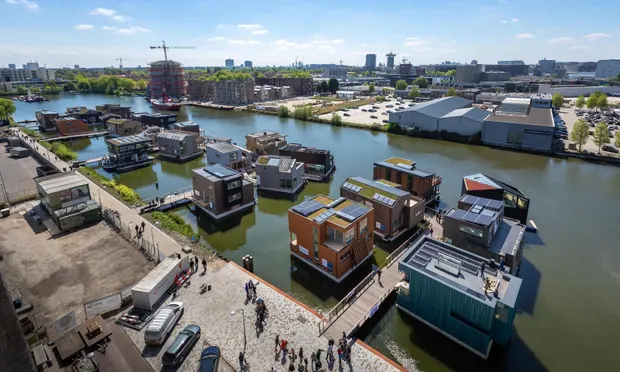
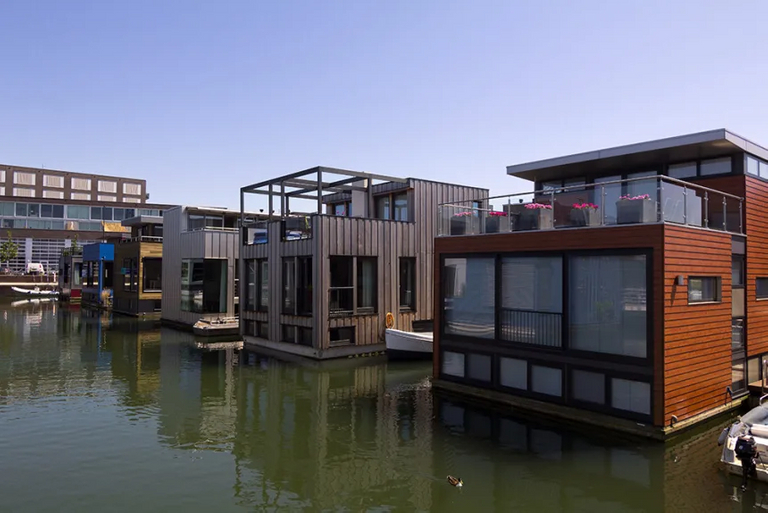
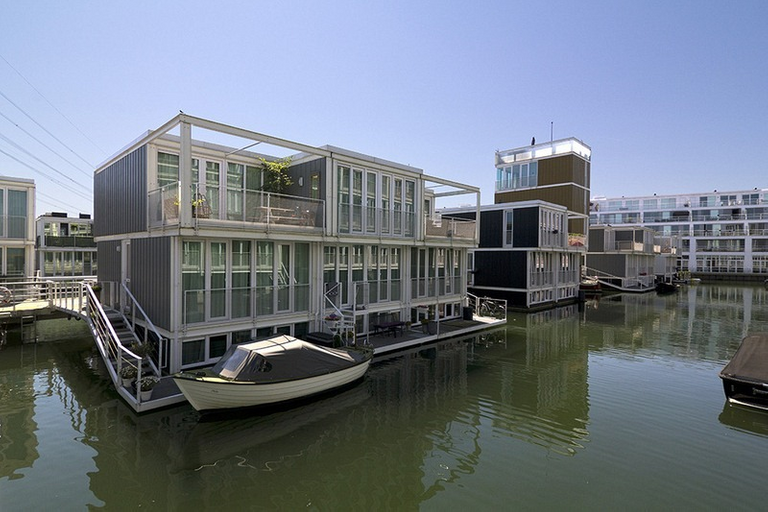
| Source | Source |
There are two types of floating houses, one that "permanently float" and the other one that "floats only when the flood arrives". Some permanently floating houses use pontoon as a flotation system (the system that makes a house float into the water). Pontoon is commonly used on boats. Others use the hollow concrete box as a flotation system. Floating house developers said that these houses can withstand gales even if they are built on floating platforms.
A permanently floating house is built first and then launched into the water just like launching a cruise ship. They are kept in place into a dock or on a permanent anchor using ropes allowing the house to rise and fall with the tide. Sometimes, you will hear the word "moor" or "moored" which means attaching a house into a dock or in a quay.

On the other hand, a house that "floats only when the flood arrives" is built within a wet dock comprising a base slab and retaining walls that retain the house in place. When the flood arrives the wet dock will be filled with water and the house rises with the flood. The water system, electrical circuitry, gas pipes, and sewerage system are all connected to the house in a flexible manner allowing them to move and adjust when the house rises during floods and back again while the flood is receding.
Get a basketball, put it inside a pail then slowly put water on the pail, while the pail is being slowly filled with water the basketball rises accordingly, it is the very same principle used in constructing a house that "floats only when the flood arrives". As to how and why the house floats are explained in the "Law of Buoyancy" also called the "Archimedes Principle". This is also the acting principle as to why boats and ships float.
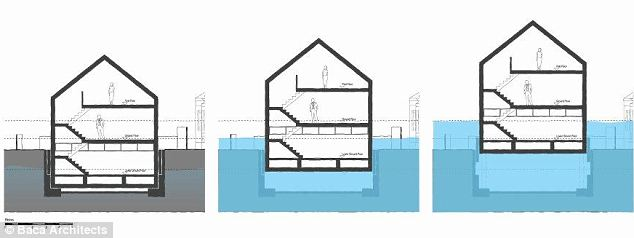
Reference: Floating and Moving Houses: A Need of Tomorrow
Reference: Archimedes' principle
Houseboat vs Floating House
You may wonder, how is a floating house differs from a houseboat? Are they the same or different?
Houseboat
A boathouse is a house that is free to roam or move from one dock to another at will and dock where permitted. A houseboat is usually constructed on a boat platform or barge platform with a motor that propels it to move. Some houseboat does not have a motor (it uses another boat to tug it from one dock to another).

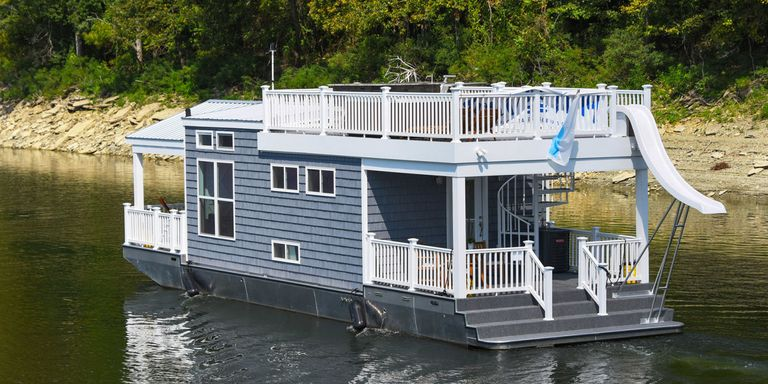
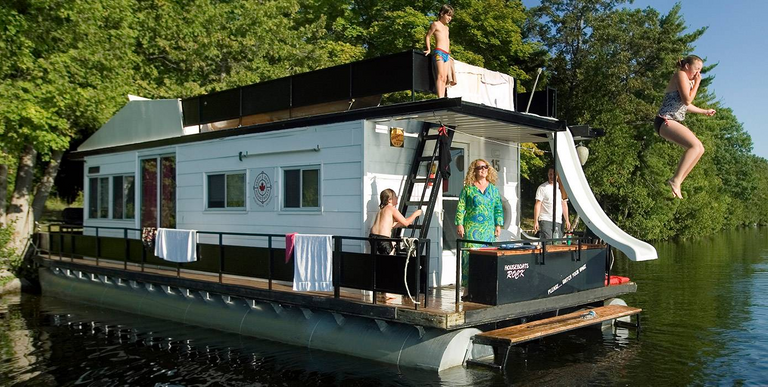
| Source | Source |
Floating House
A floating house is a house that is permanently moored or attach to a dock. A floating house's electricity, water source, gas, and sewerage systems are permanently connected through flexible wires and pipes.
If I take into accounts all the information mentioned earlier in this article, it is safe to assume that another difference between the two is "home address". I can say that a floating house does have a permanent, whilst a houseboat doesn't have one since they are a "roaming structure" whereas a floating house is permanently moored or permanently attached to a dock.

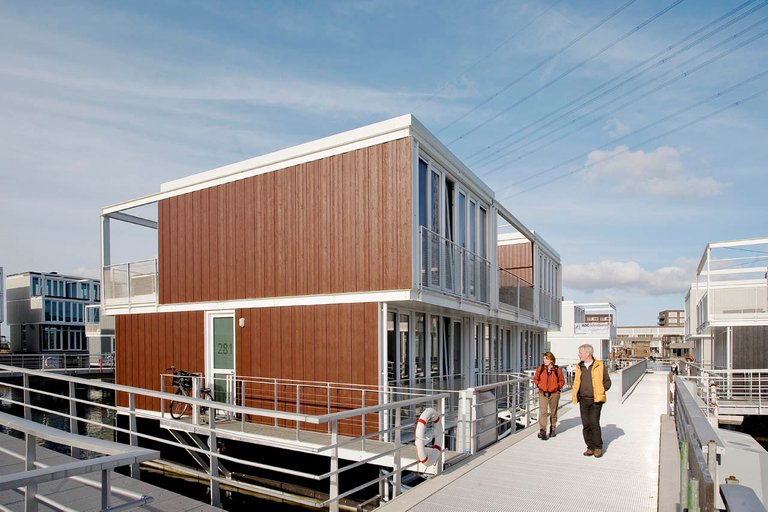

| Source | Source |
Reference: Floating house architecture: 5 incredible floating homes
Floating Houses Around the World
Luxury Living, Portage Bay, Seattle, USA
Of course, the USA will not be far behind on this type of innovation. As big as their land is, some Americans still like to live in floating houses. Just like this one from Seattle. Looking at the photo, the house has a very simple and neat design (with a touch of minimalism). It also has an open-air rooftop (which I like very much). It is a two-story floating house with an open-air terrace at the back (which I also like very much).
If I would have to live in a floating house, I would find the developer of this particular floating house.

Portland, Oregon, USA
Another state in the USA where floating houses are being developed as a real-state is Portland. Located in Oregon, these normal-looking houses are floating houses permanently moored in the dock which are also permanently connected to the city electricity, water facility, gas, and sewerage system.
This type of floating house is my second choice if I ever buy or build a floating house.
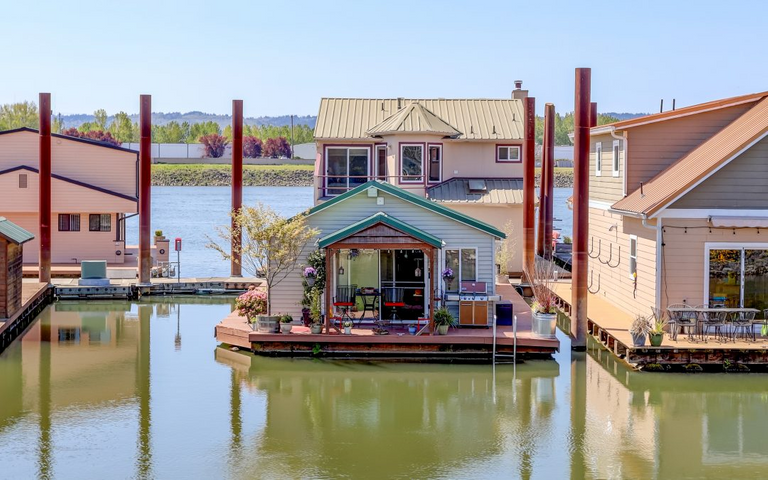
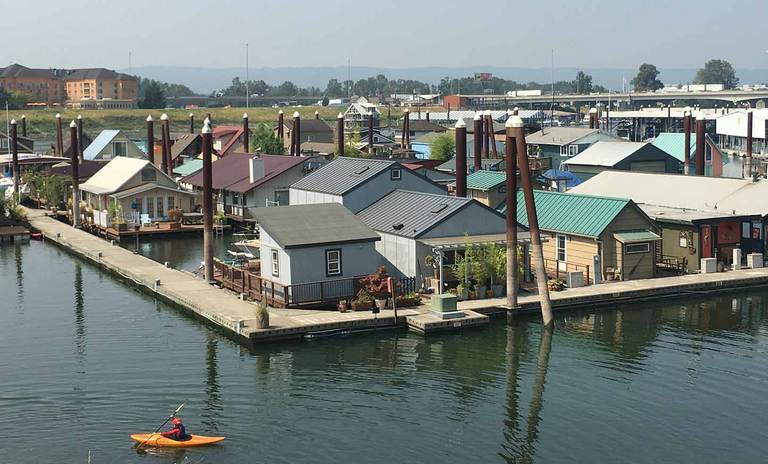
Perucac National Park Tara, 31250 Bajina Bašta, Serbia
Here's a floating house from Serbia. I also like this type of floating house particularly its design that is so classic, just like the old adage said "Classic never goes out of style". This floating house indeed has a classic design that never goes out of style. This type of house design is very common all around the world. The natural color of the wood needs no more painting.
This house seems to be accessible only by a bot since I cannot see any walking board attacked to the floating house.
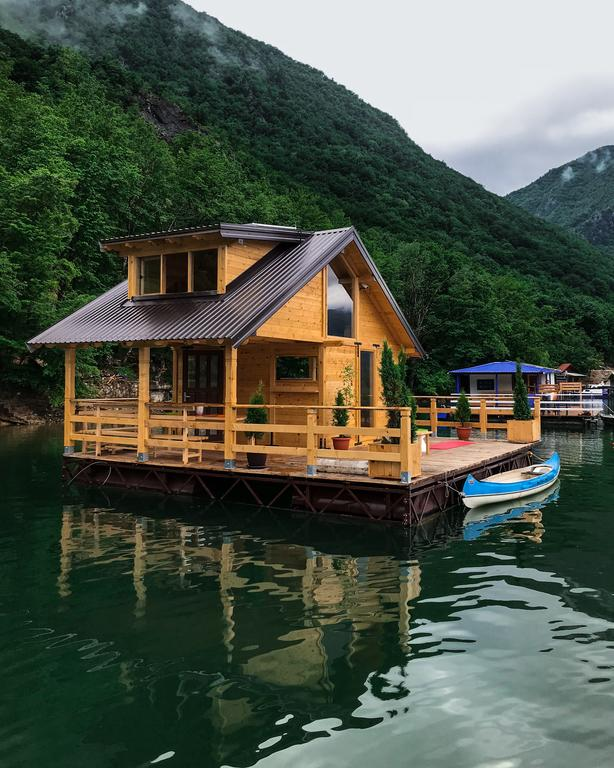
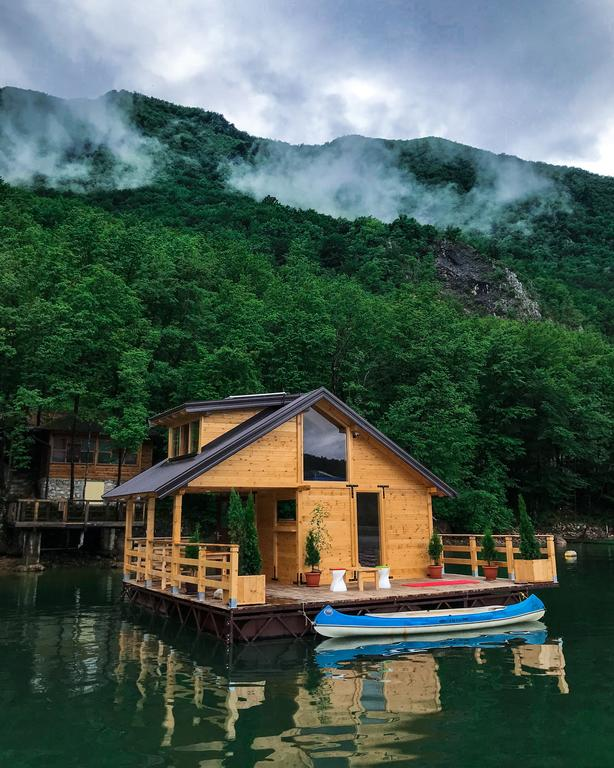
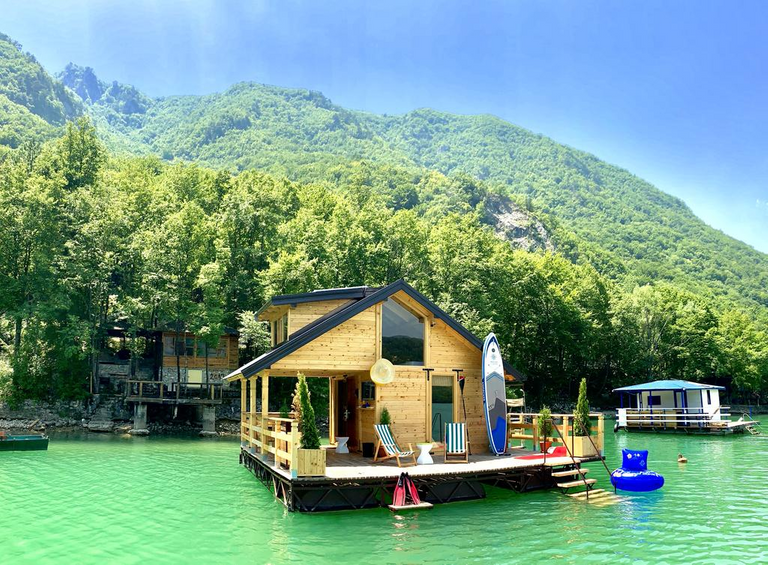
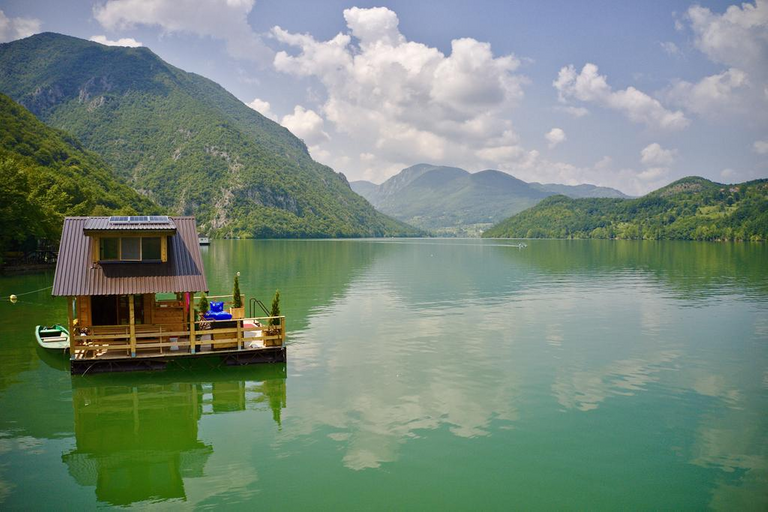
Khao Sok Lake National Park, Thailand
Who wouldn't want to visit Khao Sok Lake in Thailand? With its very lovely turquoise-colored lake anyone will be easily blown away. At Khao Sok Lake are floating bungalows (used as a hotel) that are held permanently in place by ropes. A lake with natural beauty and refreshingly floating houses to stay in it is a place where you will forget all your city stress.
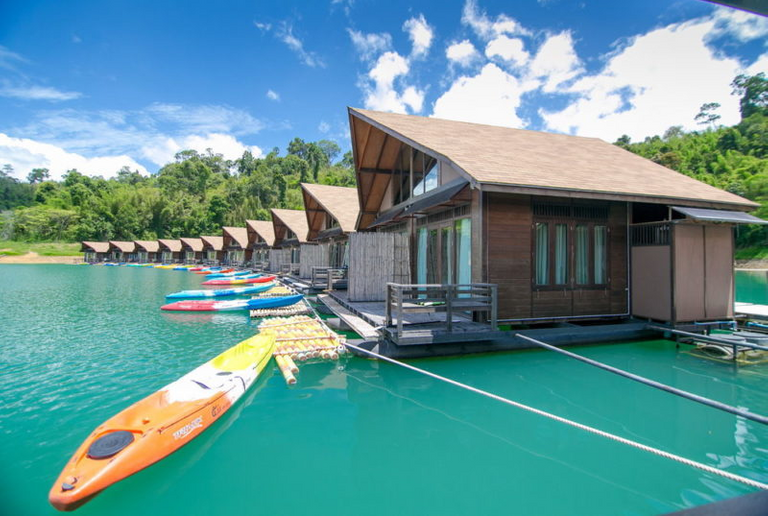
Kanchanaburi, Thailand
Thailand is one of the top tourist destinations in the world. With its majestic and natural beauty, tourists tend to return for more. Another must-visit tourist destination is the floating houses of Kanchanaburi. The houses are actually bungalows that are held in place by ropes as seen in the first photo.
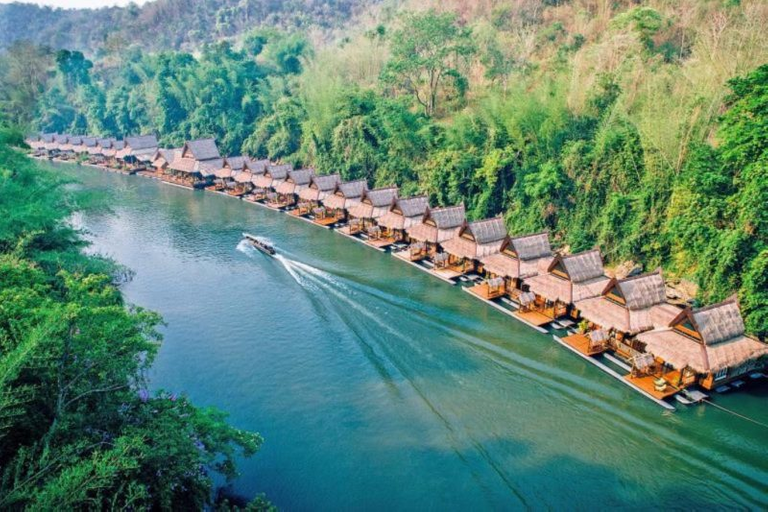
A closer look at the bungalows shows that they are floated using some type of pontoon flotation system.

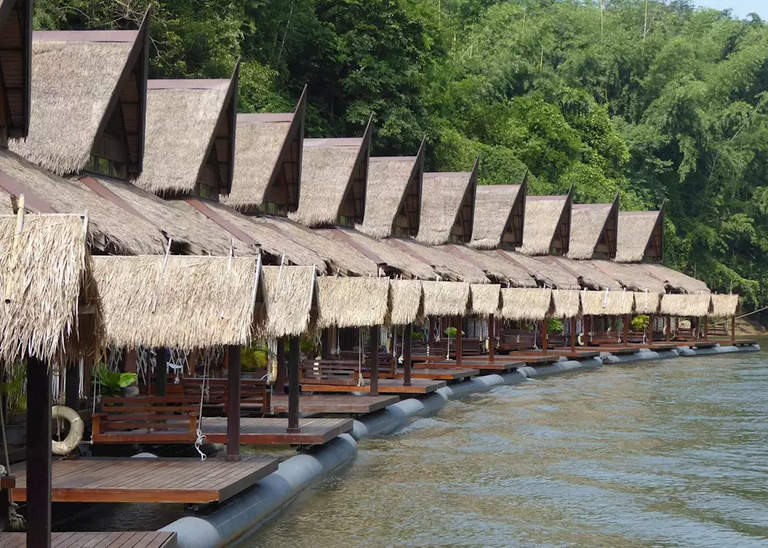
Cai Beo Floating Village, Cat Ba, Vietnam
Another country with a rich history of floating houses is Vietnam particularly Cai Beo Floating Village where families of fishermen live in a floating house that uses drums as a flotation system to keep the houses afloat. Cai Beo village is home to more or less 300 families. Cai Beo Village is also called Cai Beo Fishing Village because of the families living in the floating houses are all fishermen.
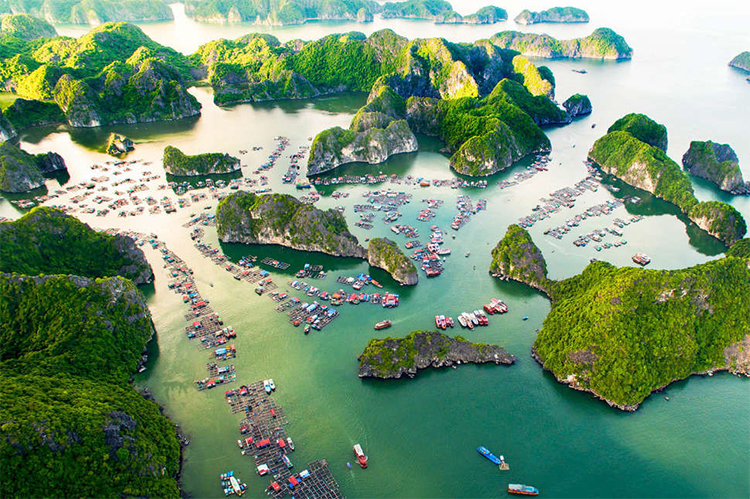
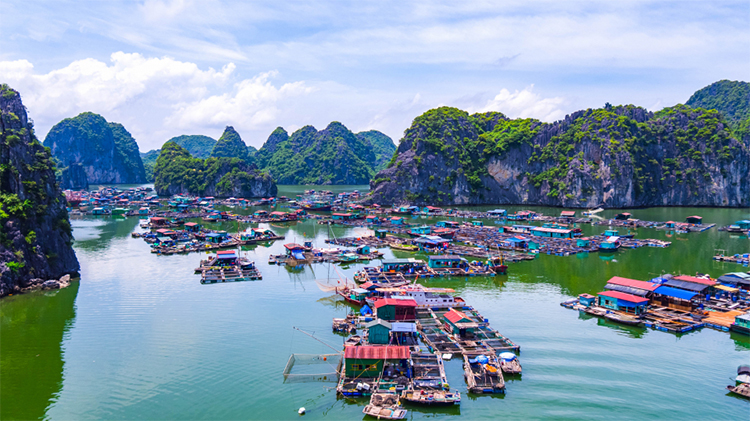
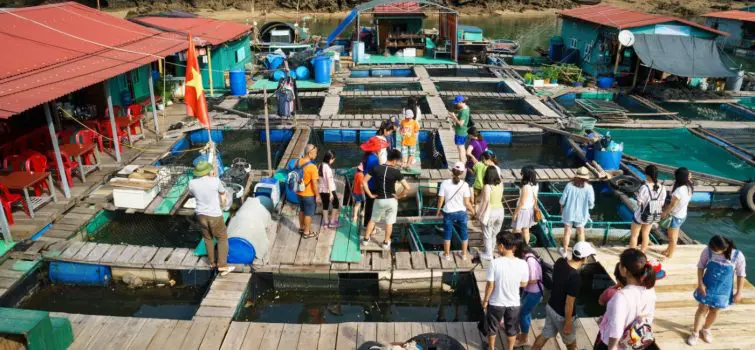

Ha Long Bay, Vietnam
Just like in Cai Beo, floating houses in Ha Long Bay use drums as a flotation system. Also, residents of the floating houses in Ha Long Bay are all fishermen.
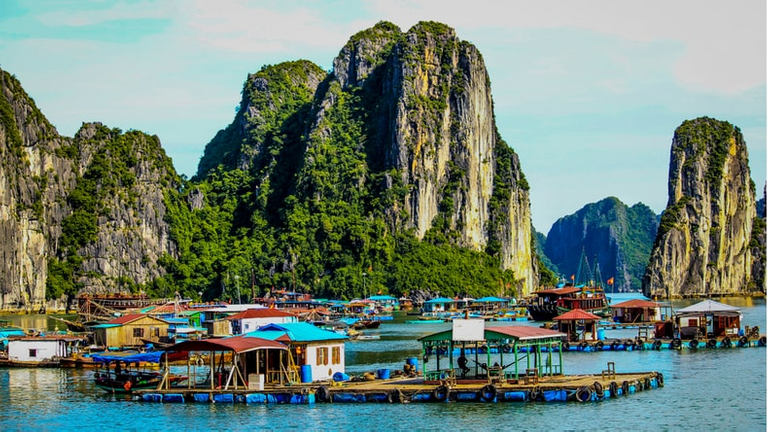
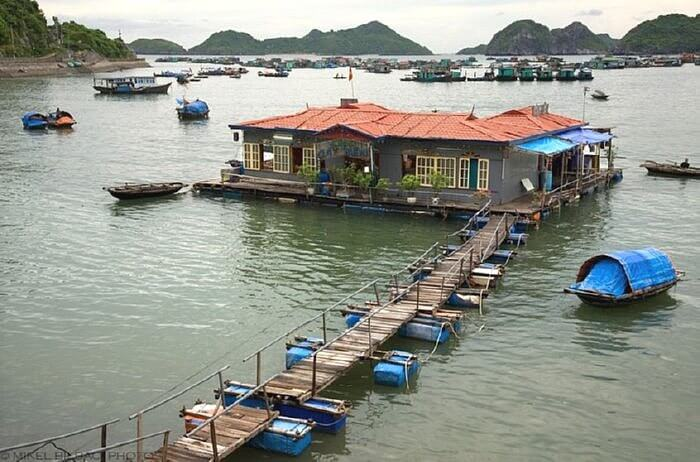

United Kingdom
Here's an egg-shaped floating house from the UK. It is cute if you ask me. It has a sunroof utilizing natural light during day time. It seemed to be able to house one to two people.
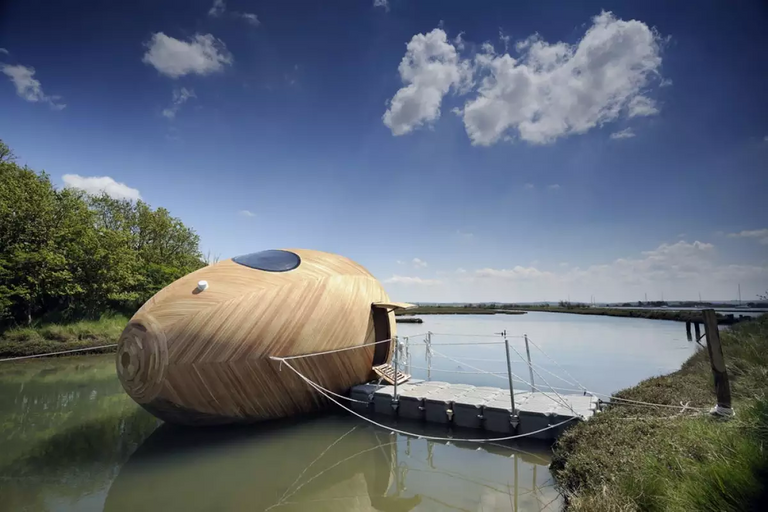


Big work !
@tipu curate 2
Upvoted 👌 (Mana: 84/112) Liquid rewards.
Thank you very much @marc-allaria
Hello @afterglow , just dropping by to congratulate you for being a part of this week's 21st edition of Architecture Brew.
The Architecture+Design Community is an Active Member of the OCD Communities Incubation Program
Find out more about the community comprehensive guidelines
Thank you very much @aplusd
Thank you very much @aplusd
Thank you very much @aplusd
Thank you very much @aplusd, it is an honor to be recognized as runner-up.
Living in an aquatic environment is a great alternative to a land-based home. Aside from having an abode, you also have the pleasurable enjoyment of the sea, lake, or body of water right beside you. Now, if you're a beach-lover, wouldn't that be a marvelous experience? If you were to choose the best aquatic location for your house, where would you like to be situated @afterglow and why?
You are right @storiesoferne it is a great alternative. If I were to choose I would like to have one in my hometown, which is Tandoc. Tandoc has a lake abundant with freshwater fish, shrimps, snails, etc. I like it in Tandoc because it is peaceful, away from the city, abundance of freshwater products and most of all I know all the people.
Indeed, as the timeless saying goes, "There's no place like home".
Yep, you are absolutely right. As a matter of fact, when I rerire, I'll go back to Tandoc to live for good.
House boats and floating houses are super exciting. I would love to own one in future. That was such an interesting post. I really appreciate the distinguishing details you mentioned.
Thank you. I am happy that you appreciate it.
Congratulations @afterglow! You have completed the following achievement on the Hive blockchain and have been rewarded with new badge(s) :
Your next target is to reach 29000 upvotes.
You can view your badges on your board and compare yourself to others in the Ranking
If you no longer want to receive notifications, reply to this comment with the word
STOPSupport the HiveBuzz project. Vote for our proposal!
Thank you @hivebuzz
You're welcome @afterglow, thanks for your motivation! 😉👍